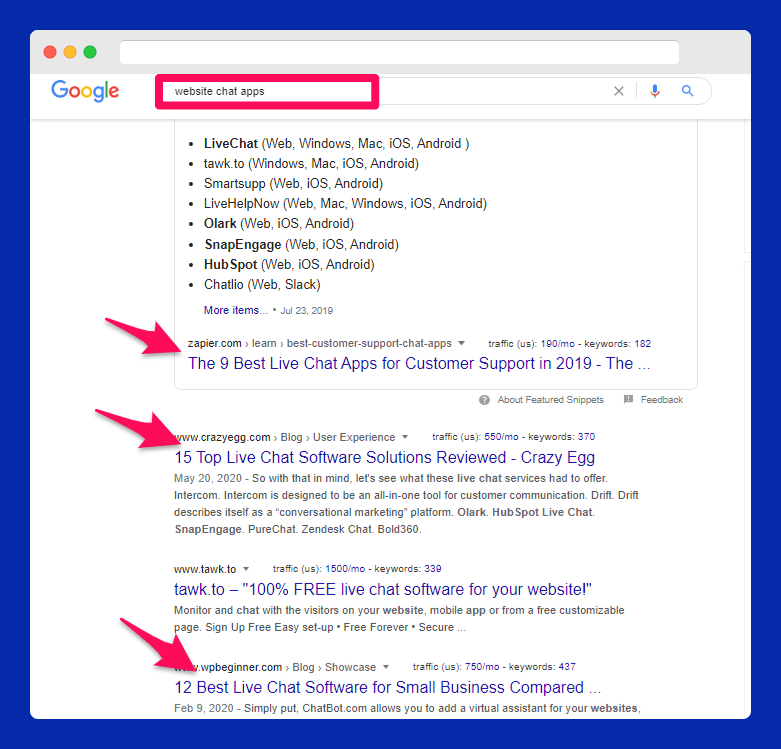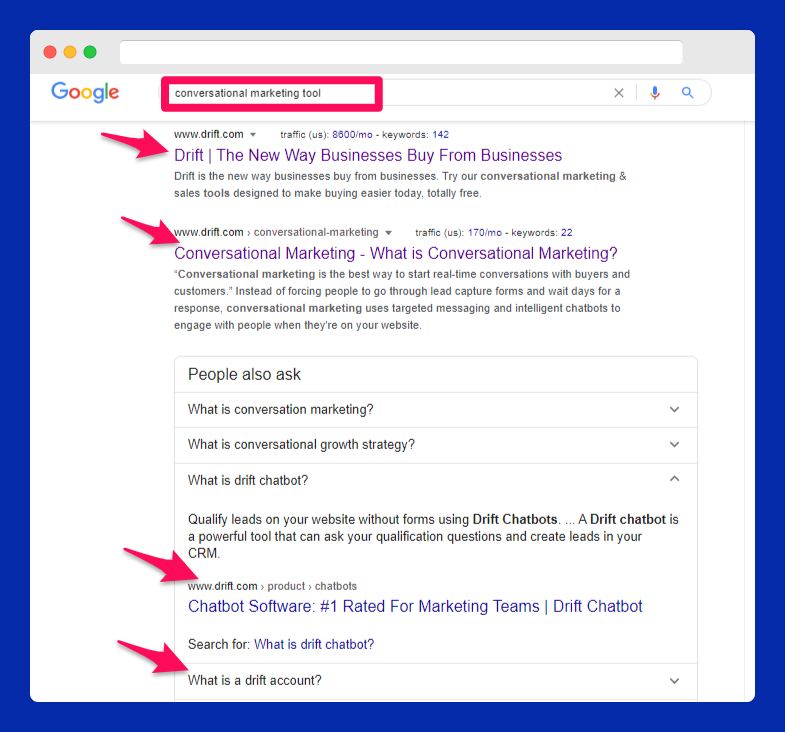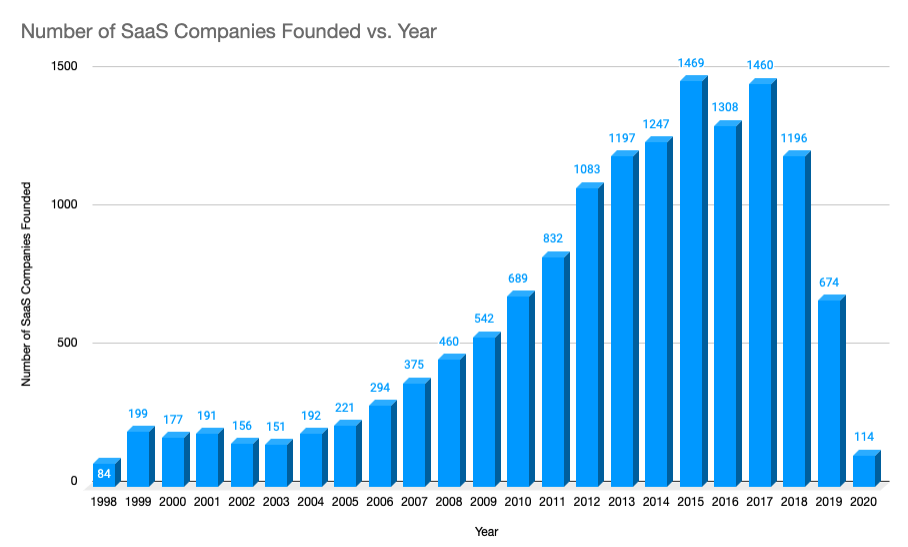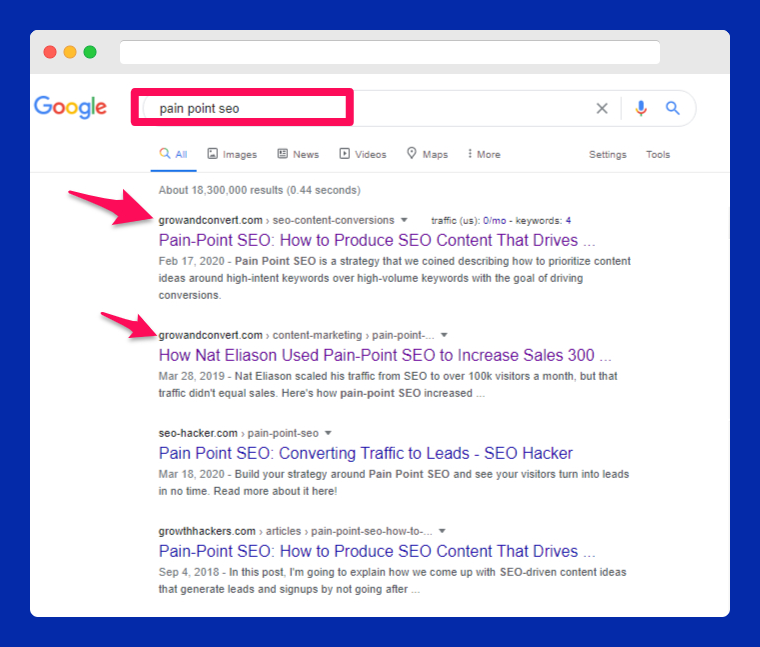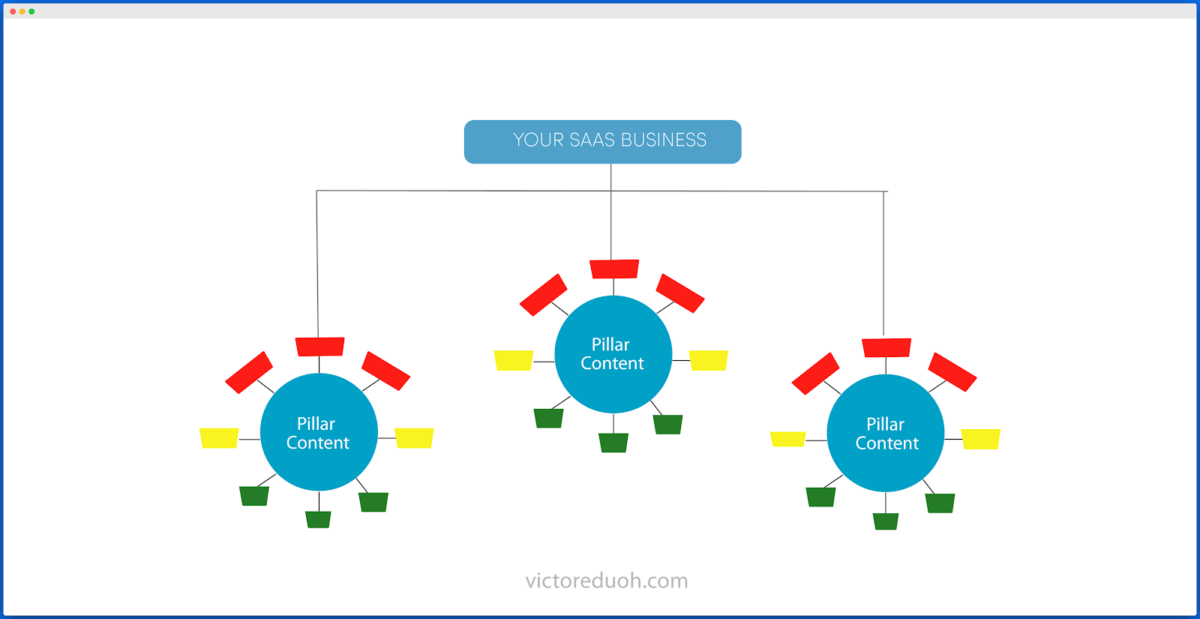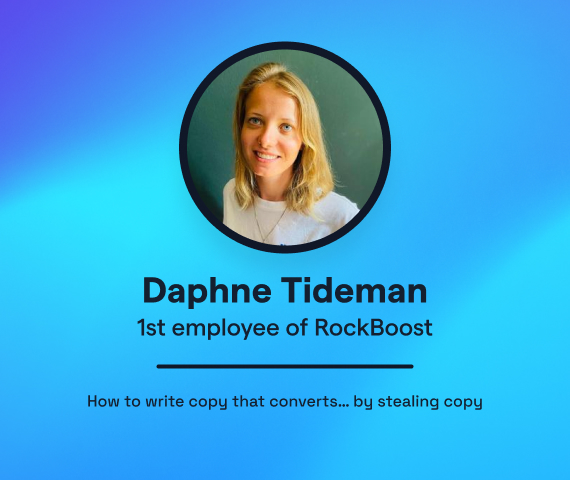How to Drive Growth by Building SaaS Topical Authority (or Creating a New Category)
Go in search of a website chat software, and you’ll be spoilt for choice.
Why?
There are so many of them to choose from:
But what happens if you caught the value proposition of a “conversational marketing” tool?
Chances are you’ll find it difficult to ignore Drift:
So how did Drift differentiate itself from tens of chatbots on the market?
No doubt, Drift is an excellent SaaS tool.
But having a great product in this overcrowded SaaS sector (over 15,529 and counting) doesn’t cut it anymore:
Hence, to stand out and drive its growth, what did Drift do?
First, Drift created a new category, “conversational marketing,” which captured their product’s value proposition. Next, they built topical authority around the same, and now the rest is history.
Is what Drift (and others you’ll find below) did pure genius? Can you do the same? And if you did, will it also drive growth for your SaaS product?
This article will answer those questions.
And you’re in luck. We won’t stop at the answers alone. I’ll also detail three steps you can use to build topical authority (or create a new category). Then, we’ll end with how to use it to drive your SaaS growth.
Sounds good?
What Does it Mean to Build Topical Authority (or Create a New Category)?
In a SaaS world of so many options, it’s only natural for other products to battle with yours for the same customers.
This situation makes differentiation your window to stand out if you must drive growth amidst the competition.
Chargebee’s John Solomon captured it well; he said:

John Solomon - Country Head @ InfrascaleToday’s market, regardless of the industry, is saturated. Without a doubt, no company is operating alone on an island. This begs the question, is there really any differentiation between the vendors?
Every company seems to be saying the same thing. Ask a company what makes them different, and you will hear something about “great service” or “functionality.
The truth is that vendors cannot compete on feature-functionalities anymore. Look at the market; every vendor has about 98% of what the leading company offers.
So, do your competitors offer the same features as your product? Since this is most likely the case, how can you differentiate, appeal to prospects, and drive growth?
Building topical authority (or creating a new category) comes in here. And this is because it’s an often neglected, time-tested way to differentiate your SaaS tool.
As you saw above, Drift leveraged this tactic to stand out from its crowded chatbot niche and drive growth.
But have other SaaS companies used this strategy to drive growth?
Yes.
HubSpot, another popular product we all know, uses it to date.
They created the “inbound marketing” category. And like Drift, they built topical authority around it. It’s what HubSpot also leveraged to become the SaaS behemoth it is today.
Writing for Nextiny Marketing, Gabriel Marguglio said:

Gabriel Marguglio - CEO, Nextiny MarketingThe concept of inbound marketing wasn’t born until 2005, after the phrase was coined by HubSpot’s co-founder and CEO, Brian Halligan.
Today, we take for granted how “inbound marketing” is synonymous with HubSpot. And “conversational marketing” with Drift.
So much that each time people talk about the value propositions around those concepts, these brands naturally come to mind.
So much that any time anyone, in any part of the world, researches those terms, these brands are up on Google’s top spots.
And if any of those searches are by potential customers, who do you think stands at the forefront of getting new customers?
These same brands. They created the category and built topical authority around them, so it makes them pioneers.
Now, this is what it means to create topical authority (or create a new category) in a crowded SaaS market. Execute this tactic well, and you’ll earn a predictable way to drive growth for your SaaS tool.
How Do You Build Topical Authority (or Create a New Category)?
To build topical authority (or create a new category) for your SaaS product, you must think outside the box.
You must come up with a conceptual phrase that doubles as a value proposition your product will deliver to prospects.
Doing this has three steps:
- Define & understand your customers’ needs.
- Observe your market (and niche), and
- Align your product’s messaging.
Keep in mind that the ultimate goal here is to differentiate your product and drive growth.
And product differentiation doesn’t necessarily mean new features (except when extremely needed).
It’s more about your messaging.
This messaging, in turn, should introduce prospects to a concept that appeals to their needs but rely on your product to bring to life.
We’ve seen it’s what Drift (conversational marketing) and HubSpot (inbound marketing) did. But, what’s a way to explain it in more detail?
Kyle Poyar; OpenView’s VP, Market Strategy, comes to the rescue:

Kyle Poyar - VP, Market Strategy, OpenViewProduct differentiation is a marketing and messaging strategy that uses your product’s characteristics to distinguish it from others that are vying for your audience’s attention and dollars.
Are you excited about building topical authority (or creating a new category) to grow your SaaS product?
Good.
Let’s explore the steps to doing so in detail.
Define & Understand Your Customers’ Needs
So far, we’ve established building topical authority (or creating a new category) isn’t about celebrating your product’s features.
Neither is it about creating new ones.
It’s about pioneering a strategic marketing message that speaks to and appeals to your customers’ needs.
Drift knew this when creating the “conversational marketing” category.
So, the first thing they did was to define and understand their ideal customers’ needs.
Dave Gerhardt, former CMO of the company, said:

Dave Gerhardt - former CMO, DriftPeople saw Drift as a chat tool to communicate with customers, but it wasn’t clear how the company was different than any of its competitors — until [they] decided to focus on marketing and sales as their primary audience.
Now over to you.
Once you define the customer segments to focus on, understand their core needs relative to your product.
Again, Drift did this.
In Leedfeeder’s report linked above, Dave continued:
“[We focused] on making sales and marketing professionals talk to the people that are visiting their website.”
And doing this was because…
“[They] realized what [their target audience wanted was] to have conversations”…that led to dollars.”
So, first things first, define and understand your customers’ needs before moving to step two:
Observe Your Market (and Niche)
Most SaaS brands don’t take the time to differentiate their product beyond features and criteria everyone competes on.
You shouldn’t do that.
Keeping with the Drift example, Dave said when they talked about their product as another chatbot, they found themselves:
“…in this mushy bucket of customer communication.”
In order words, they were like any other chatbot in their niche. The worst part was how they appeared to do the same thing as others: helping anyone interact with people on a website.
Now over to you.
It doesn’t matter if your product does the same things as those of your competitors.
To stand out from the crowd, create a new category (or build topical authority) by making your marketing message different.
And to do this, observe:
- How the market talks about products in your niche.
- How other products talk about the value they offer.
- What your ideal customers really need and how best to talk about your product in a way that appeals to them.
The next step after making these observations is alignment.
Align Your Product’s Messaging
Aligning your product’s messaging starts with brainstorming and naming a new category (or upgrading an existing one to build topical authority).
And naming is very critical, as noted in a FastCompany article:
“When naming is done well — be it for a business, a brand, a product, or anything — it paves the way for a good impression, enticing the listener or reader to come in closer.
Any category name you come up with must double as a value proposition to your prospects. It should also depend on your product to attain.
As we’ve seen, Drift was “conversational marketing.” It made sense because their tool helped its target audience start sales conversations.
HubSpot was “inbound marketing.” It made sense because their suite of tools helped to convert leads acquired through inbound techniques.
Yours could be anything, as long as it makes sense to your target audience and needs your product/service to implement.
It should spark curiosity, create interest, and be inviting enough for your target audience to want to explore.
When this happens, it lays the path to driving growth, as the next steps explain.
How to Drive SaaS Growth with Topical Authority (or a New Category)
Imagine if Drift created the “conversational marketing” category and didn’t talk about it or promote it to its target audiences.
Nobody would know about it today, let alone value it, right?
Yes. And the same would be true for HubSpot and “inbound marketing.”
Hence, you must take it upon yourself to promote the new category you create for your product. Doing this is how you build authority, as people come to see you as the pioneers.
Take Benji Hyam, a vetted Growth Mentor who leads one of our best SaaS content marketing agencies, for example. His agency developed and built topical authority on “pain point SEO.” As you’d know, this was off the existing search engine optimization category.
In order words, by observing an existing category closely, you can still come up with variations of it to build topical authority on.
But, to make people appreciate it, so you can leverage it to get customers, Benji and his team at Grow&Convert talked, wrote, and promoted it massively.
Today, not only are they Google’s top position for search queries involving “pain point SEO,” other companies reference (and link back to) them when they mention it:
So, how did Drift, HubSpot, and now Benji and his team do it and how can you also do the same to drive growth?
Start by Developing a Content Strategy
Don’t go about creating content on a new category or building topical authority on an existing one without a content strategy.
Jakub Zajíček, former CMO of PitchGround advised against this in an article on SaaS content marketing:

Jakub Zajíček - former CMO, PitchGroundWithout a strategy, it’d be just shooting in the dark. It’s important to start by fully understanding the audience’s needs, challenges, desires, goals, and then craft content around that.
[Your] target audience always comes first.
By providing enough value through topics that are relevant to potential customers, the growth will inevitably come. Both in terms of brand awareness, sales, sign-ups, or other KPIs.
And a strategy that works well for this is the SaaS Content Topic Clusters Strategy, CTCS.
Developing a content strategy with this framework involves five steps:
- Research the subtopics and concepts your business needs/should be ranking for.
- Take note of all keywords and search queries related to each subtopic.
- Examine the user intent of these keywords and search queries. Then, group them to form TOFU, MOFU, and BOFU content pieces.
- Create content pieces for these TOFU, MOFU, and BOFU queries, keeping your new category in mind.
- Create a pillar post and link to those TOFU, MOFU, and BOFU content pieces to form robust, internally-linked clusters.
In the end, you’ll get a site structure like this:
Conclusion
Once you name a new category or upgrade an existing one to build topical authority, your company becomes its pioneers.
Promote it enough that your target audience catches on with its value proposition, and it’ll get people to stop seeing your product as one of many options.
Instead, when they go in search of this value proposition, your product will be at its forefront. This, in turn, increases your chances of getting new customers.
However, remember that creating a new category or building topical authority isn’t about developing new features. Neither is it about introducing new service verticals.
It’s about crafting a new marketing message in a conceptual phase. This message must appeal to your target audiences and double as a value proposition achievable with your product.
Doing this works when approached with the SaaS Content Topic Clusters Strategy, CTCS.
And SaaS companies, including HotJar, HubSpot, Grammarly, and others, leverage variations of this topic clusters strategy to build topical authority and boost their reach.
